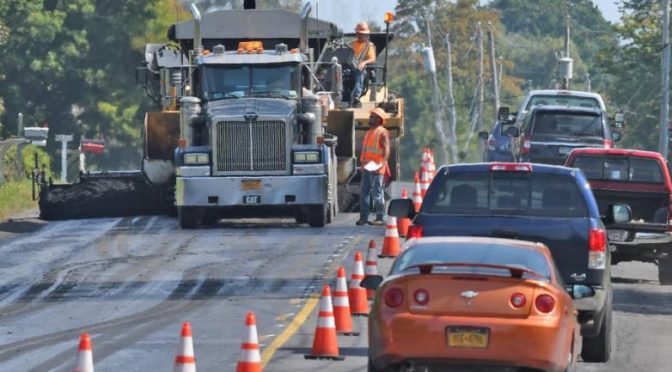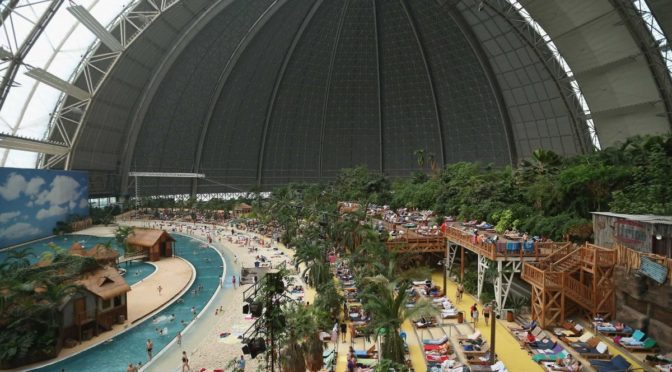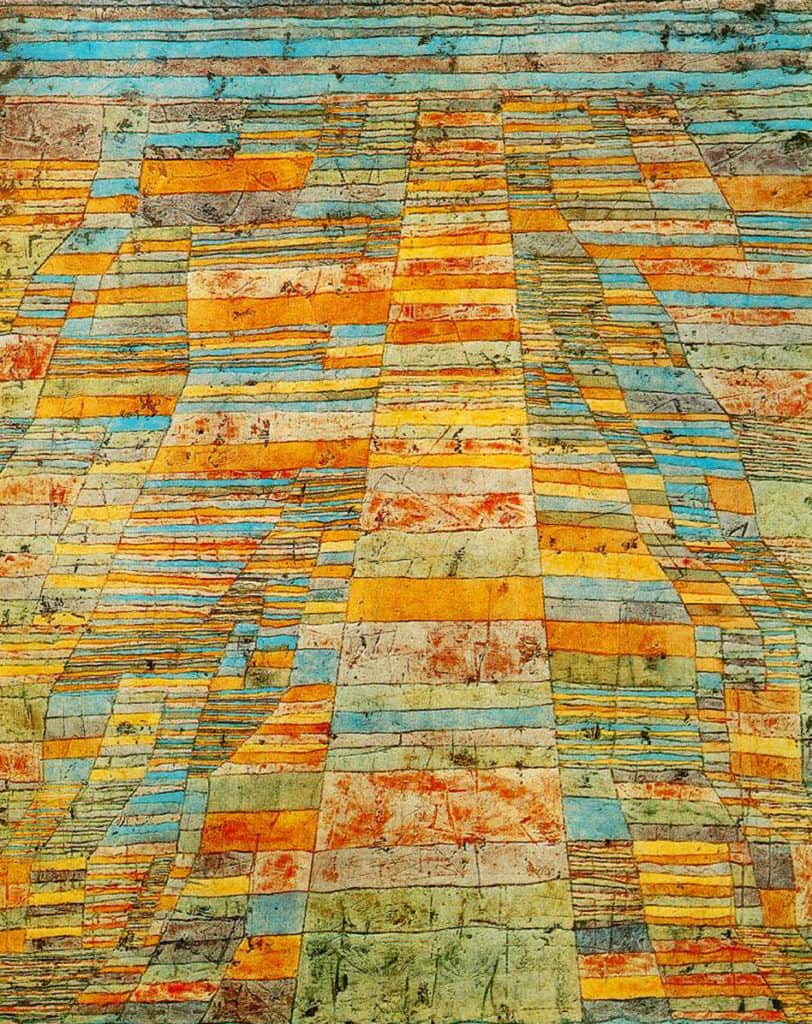
Terre Potentiel | The City in Art
by Dr. Mark David Major, AICP, CNU-A
According to the one interpretation of Paul Klee’s Highways and Byways, plots of lands are used as ‘building blocks’ to offer an aerial view of the landscape in order to create the illusion of perspective and relief. “Complexity emerges geometrically by successive doublings from a central ‘highway’ to create ‘byways’ (i.e. small, more dense or compact plots of land), only to be lost again by inversely halving their number.” The largest plots forming the central ‘highway’ approach a water body (probably the River Nile since this period of Klee’s paintings came after a trip to Egypt). However, the title of Klee’s painting indicates a different interpretation than agricultural plots for the colored strata (Source: The Peacock’s Tail: Essays on Mathematics and Culture). It does seem to hint at more than an abstract painting of an agricultural landscape. 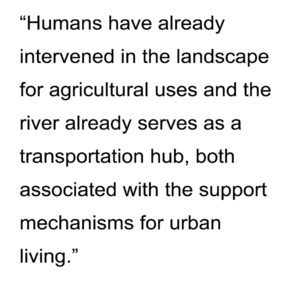 Perhaps skewed by an American perspective towards the land, it might suggest terre potentiel (the potential of the land). Humans have already intervened in the landscape for agricultural uses and the river already serves as a transportation hub, both associated with the support mechanisms for urban living. “In this pattern of fields, all is order, timeless structure, with a poetic element added… in twentieth-century creative language” (Source: PaulKlee.net). It is in this ‘timeless structure of order’ that can be found the design traces of a future urban pattern, a future city that has yet to emerge from the land but the potential for its emergence is already etched in the landscape. I love this painting, not so much for what it represents in the ‘here and now’ (though it is beautiful only on these terms) but what it represents about the possible, the “undiscovered country,” …the future, where all travelers must venture but none may journey before it is time.
Perhaps skewed by an American perspective towards the land, it might suggest terre potentiel (the potential of the land). Humans have already intervened in the landscape for agricultural uses and the river already serves as a transportation hub, both associated with the support mechanisms for urban living. “In this pattern of fields, all is order, timeless structure, with a poetic element added… in twentieth-century creative language” (Source: PaulKlee.net). It is in this ‘timeless structure of order’ that can be found the design traces of a future urban pattern, a future city that has yet to emerge from the land but the potential for its emergence is already etched in the landscape. I love this painting, not so much for what it represents in the ‘here and now’ (though it is beautiful only on these terms) but what it represents about the possible, the “undiscovered country,” …the future, where all travelers must venture but none may journey before it is time.
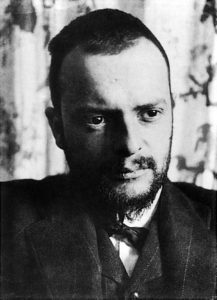 About Paul Klee
About Paul Klee
Paul Klee (1879–1940) was born near Bern, Switzerland. He studied drawing and painting in Munich for three years beginning in 1898. By 1911, he was involved with the German Expressionist group Der Blaue Reiter (The Blue Rider), founded by Wassily Kandinsky and Franz Marc. In 1914, Klee visited Tunisia. The experience was the turning point. The limpid light of North Africa awakened his sense of color. Klee gradually detached color from physical description and used it independently, giving him the final push toward abstraction. In 1920, Walter Gropius invited Klee to join the faculty of the Bauhaus. Nearly half of Klee’s work was produced during the ten years he taught at the Bauhaus. From 1931-1933, Klee taught at the Academy of Fine Arts in Düsseldorf. When the National Socialists declared his art “degenerate”, he returned to his native Bern. Klee suffered from a wasting disease, scleroderma, towards the end of his life, enduring the pain until his death in Muralto, Locarno, Switzerland, on June 29, 1940 (Source: Metropolitan Museum of Art/Wikipedia).
Visit the Artsy.net Paul Klee page here.
Read a later article about another Paul Klee painting featured in The City in Art series here.
The City in Art is a series by The Outlaw Urbanist. The purpose is to present and discuss artistic depictions of the city that can help us, as professionals, learn to better see the city in ways that are invisible to others. Before the 20th century, most artistic representations of the city broadly fell into, more or less, three categories: literalism, pastoral romanticism, and impressionism, or some variation thereof. Generally, these artistic representations of the city lack a certain amount of substantive interest for the modern world. The City in Art series places particular emphasis on art and photography from the dawn of the 20th century to the present day.

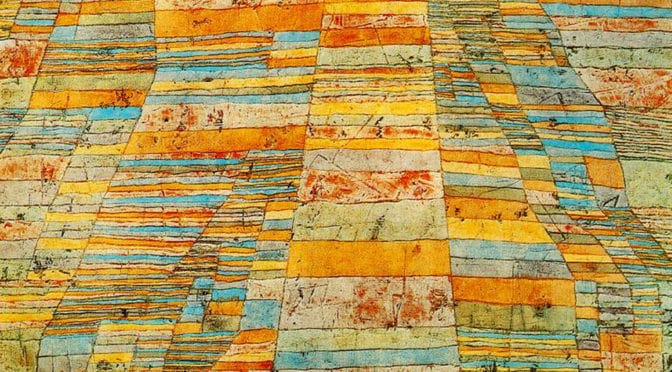
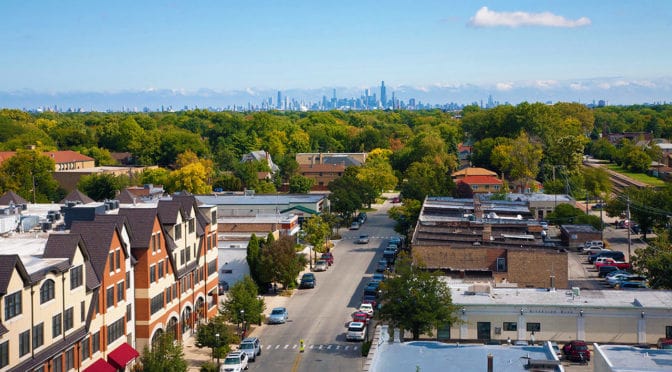
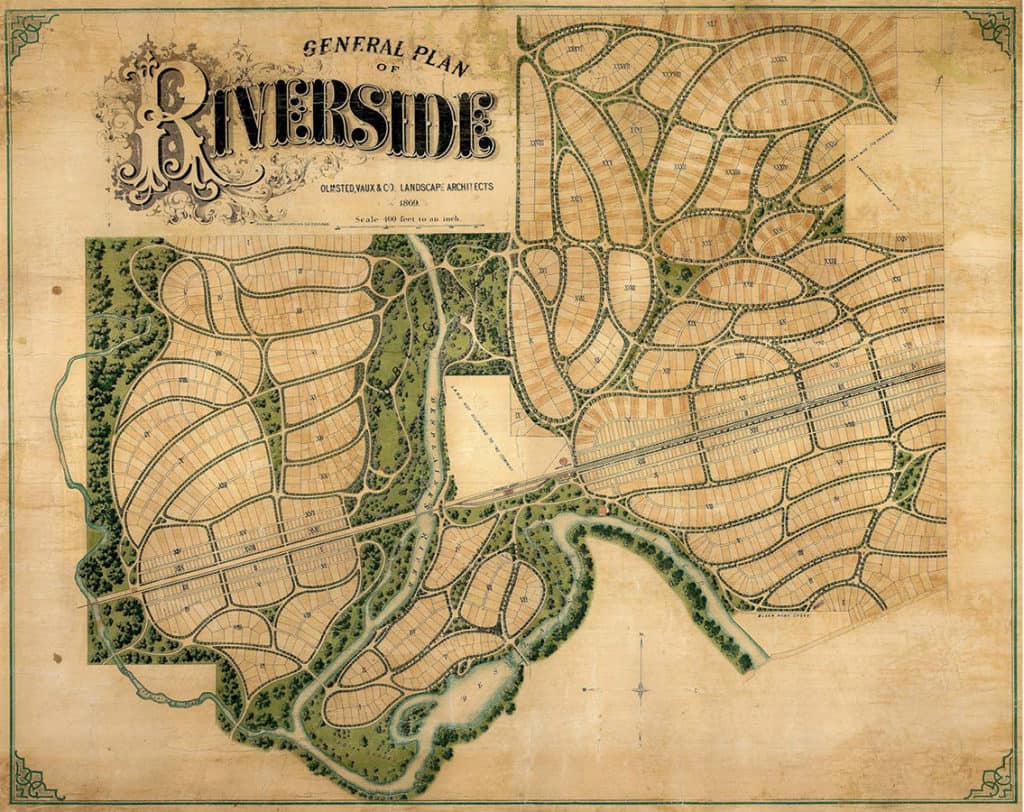
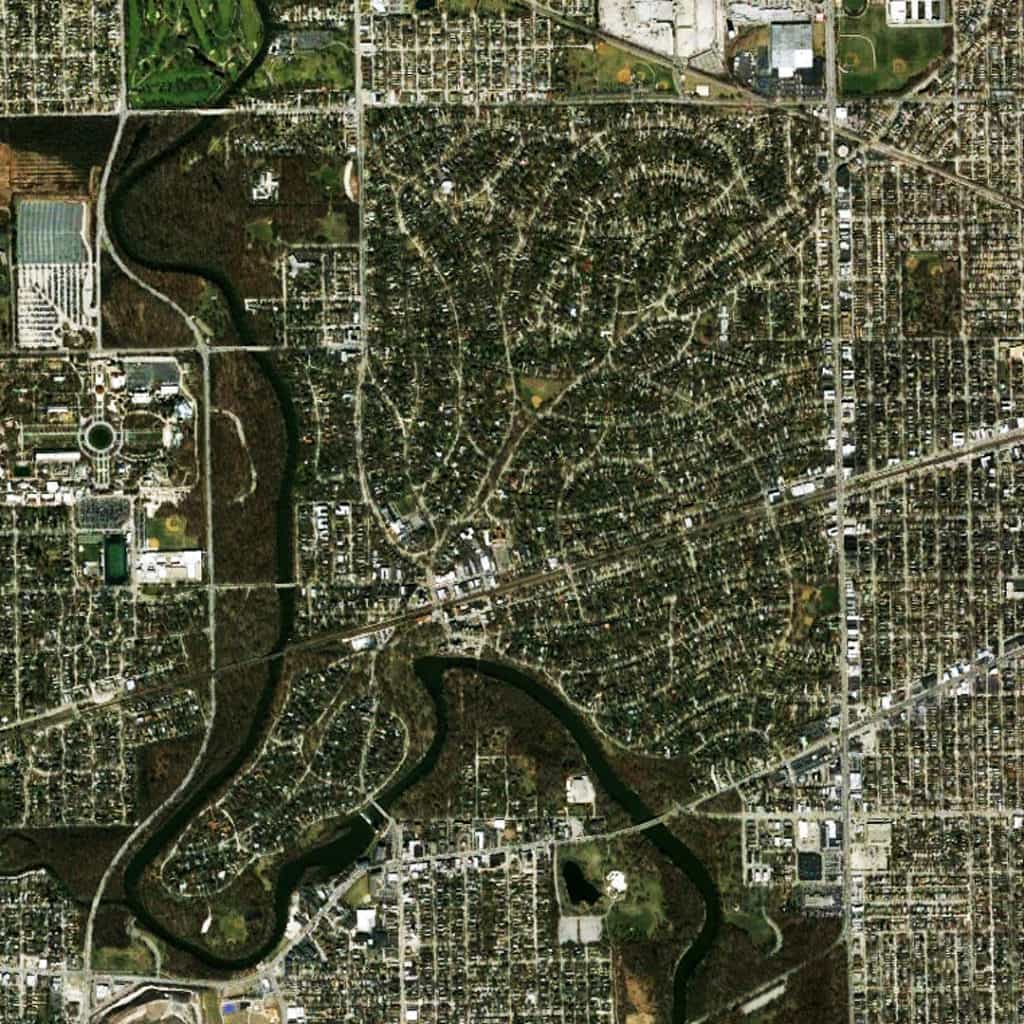
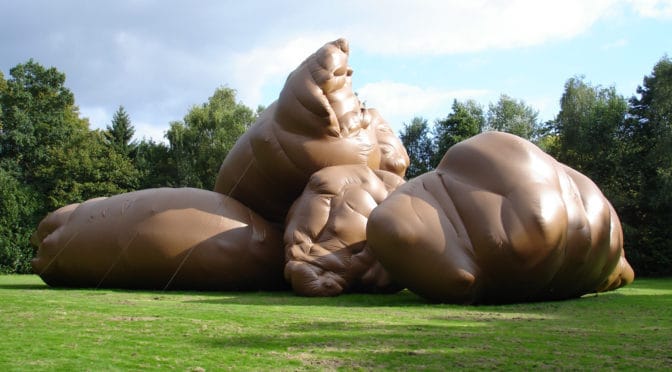
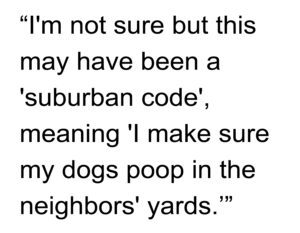 “Call the police, I’m sure it must be a crime,” turned around and walked back the way we came out of the neighborhood, all the while dutifully carrying my doggy poop bag and carefully navigating through multiple piles of dog shit in the neighborhood common areas. Needless to say, Izzy and I will never be walking in that neighborhood again (not that it was ever likely anyway).
“Call the police, I’m sure it must be a crime,” turned around and walked back the way we came out of the neighborhood, all the while dutifully carrying my doggy poop bag and carefully navigating through multiple piles of dog shit in the neighborhood common areas. Needless to say, Izzy and I will never be walking in that neighborhood again (not that it was ever likely anyway).